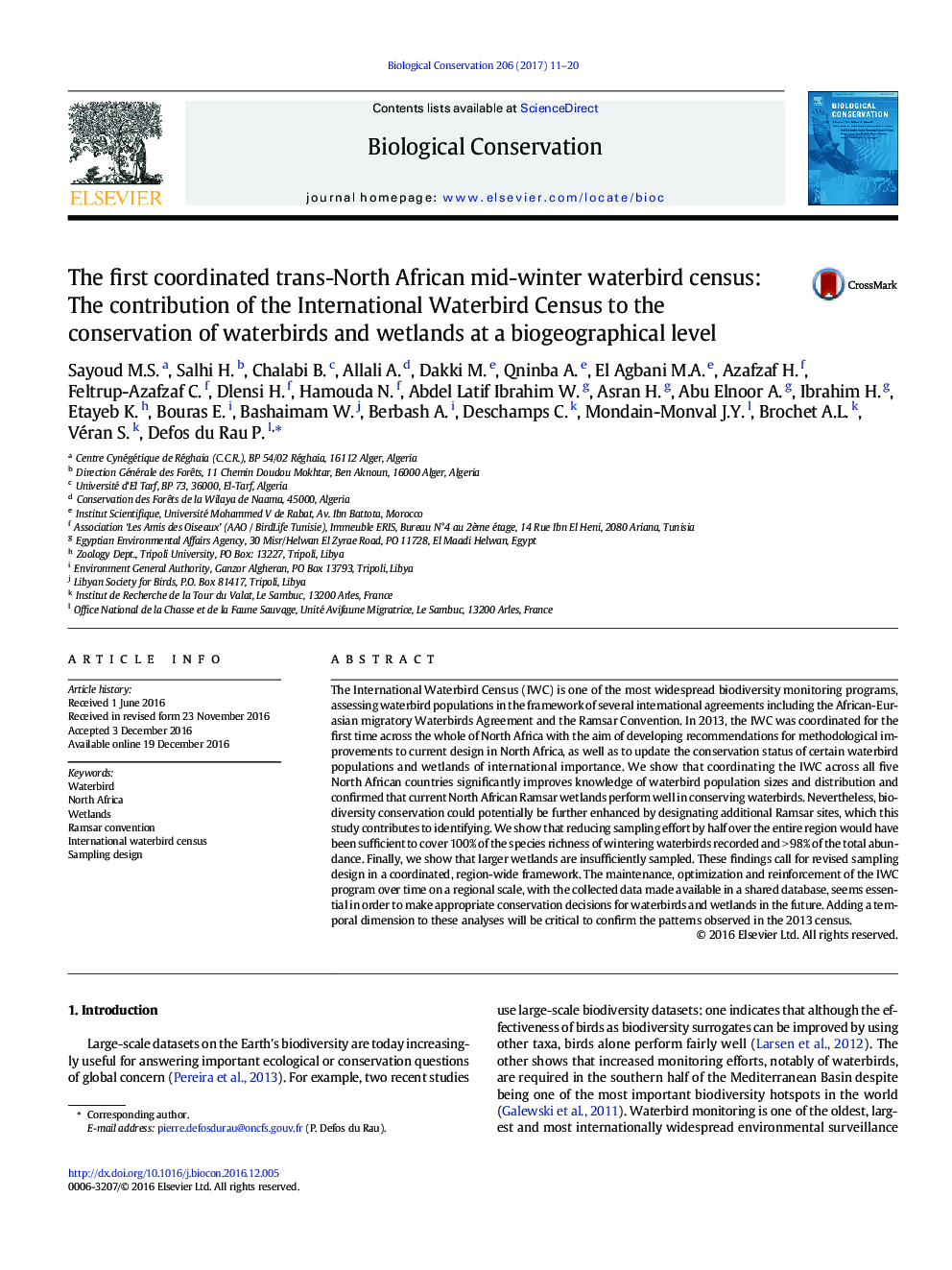| کد مقاله | کد نشریه | سال انتشار | مقاله انگلیسی | نسخه تمام متن |
|---|---|---|---|---|
| 5743266 | 1617896 | 2017 | 10 صفحه PDF | دانلود رایگان |
- The International Waterbird Census (IWC) is a global biodiversity monitoring scheme.
- Coordination over whole North-Africa showed that sampling design could be improved.
- Cost-effectiveness of IWC could be improved in a resource-constrained context.
- The current North African Ramsar wetlands perform well in conserving waterbirds.
- Coordination of IWC and extension of Ramsar network are recommended for North Africa.
The International Waterbird Census (IWC) is one of the most widespread biodiversity monitoring programs, assessing waterbird populations in the framework of several international agreements including the African-Eurasian migratory Waterbirds Agreement and the Ramsar Convention. In 2013, the IWC was coordinated for the first time across the whole of North Africa with the aim of developing recommendations for methodological improvements to current design in North Africa, as well as to update the conservation status of certain waterbird populations and wetlands of international importance. We show that coordinating the IWC across all five North African countries significantly improves knowledge of waterbird population sizes and distribution and confirmed that current North African Ramsar wetlands perform well in conserving waterbirds. Nevertheless, biodiversity conservation could potentially be further enhanced by designating additional Ramsar sites, which this study contributes to identifying. We show that reducing sampling effort by half over the entire region would have been sufficient to cover 100% of the species richness of wintering waterbirds recorded and >Â 98% of the total abundance. Finally, we show that larger wetlands are insufficiently sampled. These findings call for revised sampling design in a coordinated, region-wide framework. The maintenance, optimization and reinforcement of the IWC program over time on a regional scale, with the collected data made available in a shared database, seems essential in order to make appropriate conservation decisions for waterbirds and wetlands in the future. Adding a temporal dimension to these analyses will be critical to confirm the patterns observed in the 2013 census.
Journal: Biological Conservation - Volume 206, February 2017, Pages 11-20
